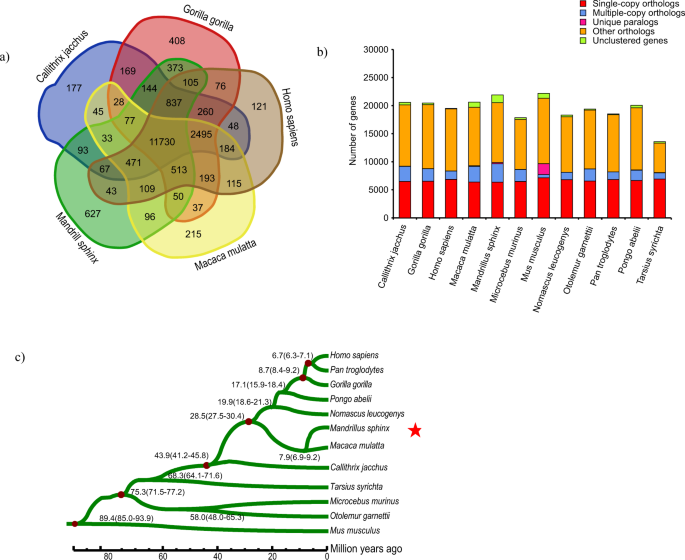This article introduces the draft genome of the mandrill. Authors note that mandrill studies are limited, especially in comparison to other primate species. Something interesting they talked about was that genome sequencing has to meet two main criteria: (1) they have to be important in the evolutionary position within the phylogeny; (2) biomedical relevance to humans.
For the genome sequencing, 284 Gb data providing 96-fold coverage was used to reconstruct the mandrill genome. Within the mandrill genome, there were 43.83% repeated elements and 21, 906 protein coding genes. Comparative genomic analyses of MHC molecules of the immune systems of mandrills and humans showed there are 17 genes in the mandrill that have associated phenotypes in humans such as lung cancer and asthma. 627 gene families with 1, 293 genes were found to be unique to the mandrill (Figure 1a). 5,133 single orthologous genes were found to be shared between 12 species of primates (Figure 1a-b). Furthermore, phylogenetical analysis showed that the mandrill split from macaque, based upon mtDNA sequences occurred around 6.9-9.2 MYA, up from the previous estimate of 6.0-8.0 MYA (Figure 1c).

Warrenkevin Henderson
Nature Journal Post 16APR20 5/5
https://www.nature.com/articles/s41598-020-59110-3

No comments:
Post a Comment